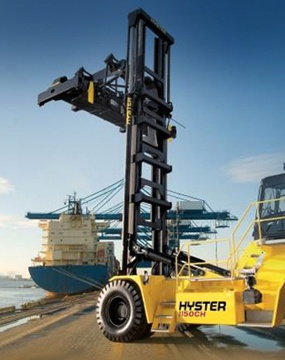On November 10, 2016, 100 government officials, terminal operators, environmental advocates, and technology solutions providers met at the Port of Los Angeles to discuss how the use of hydrogen in the nation’s seaports can dramatically reduce toxic air pollutants and greenhouse gas emissions. The Port of LA is the busiest in the nation and the 9th largest in the world. It was an ideal setting for a workshop convened by the California Hydrogen Business Council to explore how hydrogen and fuel cells solutions at ports can address some of the most pressing environmental issues of today.
Ports provide unique opportunities for targeted air quality improvement efforts. Most of the equipment used for container handling, such as cranes, reach stackers, forklifts, and rail freight cars, are diesel powered. Ports are therefore the source of concentrated emissions of diesel particulates, nitrogen oxides (NOx), sulfur dioxide (SO2), and carbon monoxide, as well as greenhouse gas emissions (primarily CO2). What’s more, since ports are often adjacent to disadvantaged communities, populations at the lower economic end of the scale bear a disproportionate burden of the health effects of the freight movement associated with global commerce.
For these reasons, policy at the local, state, and federal levels is focusing on how to reduce emissions from port activity. At the workshop, speakers from the Ports of LA and Long Beach, the California South Coast Air Quality Management District, the EPA, the U.S. Department of Energy, the California Air Resources Board (ARB), and the California Energy Commission described how the adoption of hydrogen fuel cell technologies would advance the missions of their respective organizations. Heather Arias, Chief of the Freight Transport Branch at the California ARB, identified her agency’s three primary environmental goals:
- Cut air toxins that cause health risks to the general population
- Attain state and federal air quality standards
- Mitigate climate change
Fuel cells address these objectives directly by offering zero-emissions, high-efficiency equipment that can be powered by hydrogen produced partly or entirely from renewable feedstocks.
The message to technology providers from port operators was clear: New products based on advanced clean energy technologies such as fuel cells must be as reliable as current diesel-powered equipment, ideally should not require operational changes, and must provide a return on investment. While fuel cell solutions will have higher capital costs in the near term – an issue that will be mitigated in the future by increases in manufacturing volume – they do not necessarily require significant changes in how equipment is refueled. With fewer mechanical moving parts than internal combustion engines, fuel cell power systems also have the potential to be more reliable than their diesel counterparts.
 At the early stage of market transformation, incentives are key to fostering customer adoption of hydrogen technologies. California is a leader in recognizing this and in providing funding to both technology providers and to terminal operators. In California, the outlook for 2050 is that every piece of equipment operating in a port that can be zero emissions must be, and everything else will be near-zero emissions or renewable.
At the early stage of market transformation, incentives are key to fostering customer adoption of hydrogen technologies. California is a leader in recognizing this and in providing funding to both technology providers and to terminal operators. In California, the outlook for 2050 is that every piece of equipment operating in a port that can be zero emissions must be, and everything else will be near-zero emissions or renewable.
These goals can be achieved by the electrification of all equipment that is currently diesel-powered. With access to the full range of hydrogen and fuel cell technologies developed by Nuvera, the Hyster-Yale Group, a leading provider of container handlers and other materials handling equipment used at ports around the globe, is in a unique position to offer zero-emissions freight movement solutions.
